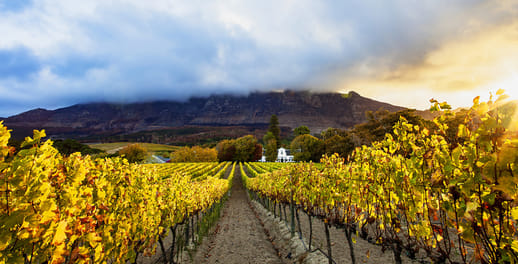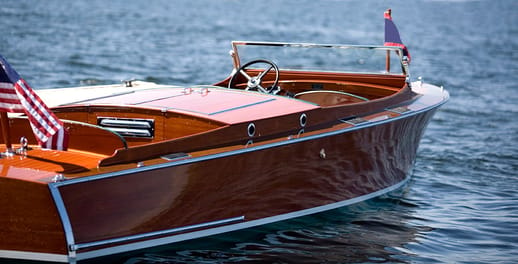Investment in luxury goods takes many forms, a fact recently made clear at the unveiling of a jaw-dropping painting called Mona Lisa: The Secret in the Eye at a London gallery. A professionally forged version of the iconic painting, at the centre of the subject’s left pupil is a further replica, less than 1mm2 and painted with the artist’s eyelash. It’s on sale now, for £1m, via luxury website VeryFirstTo.
Knight Frank’s most recent Wealth Report Attitudes Survey pinpoints ‘personal enjoyment’ as the number one reason why ultra-high-net-worth individuals collect and buy luxury assets. Be it the moment you step foot onto a red carpet wearing the diamond jewel of your dreams, the contemplation of the hundreds of hours taken to craft the beating heart of the skeleton tourbillon watch on your wrist or the excitement of taking to the road in a rare classic car, personal enjoyment topped both capital appreciation and status in Knight Frank’s line-up.
The global luxury goods market is predicted to grow in 2017 by 2-4%, to $290 billion, according to Bain & Co, a consultancy firm. This despite recent currency fluctuations, flagging consumption in China and the terror-related drop in European tourism.
Meanwhile, global sales of luxury goods are up 6.8% on last year, says consultancy firm Deloitte, with almost half of luxury purchases made while travelling in a foreign country (31%) or at the airport (16%) and bags and accessories the fastest growth sector.
Among today’s top performing luxury investments are wine, classic cars, coins, jewellery, art, coloured diamonds and watches.
Among today’s top performing luxury investments are wine, classic cars, coins, jewellery, art, coloured diamonds and watches, according to Knight Frank’s Luxury Investment Index. Taken as a whole, the asset classes in the report saw an annual growth to Q1 2017 of 5%.
Recent highlights include an Alfa Romeo 1939 8C Lungo Spider, sold for £15.3m at RM Sotheby’s in 2016, setting a new record for a pre-war vehicle. In 2014, car dealer Simon Kidston struck what is possibly the biggest car deal ever when he sold a 1962 Ferrari 250 GTO for an undisclosed price said to be higher than the £22.8m paid for another similar car at Bonham’s in 2014.
Diamonds and diamond jewellery have also been scaling new heights. In April 2017, the 59.6 carats Pink Star fetched £57m at Sotheby’s Hong Kong, becoming the world’s most expensive diamond sold at auction. In May, the world’s most expensive pair of diamond earrings sold at Sotheby’s Geneva for £44.9m. Then in June at Sotheby’s London, a ring originally bought at a car boot sale for £10 in the 1980s sold for a staggering £657,000 following a frenzied two-minute bidding session.
However, a year earlier, in June 2016, when the Lesedi La Rona, the largest diamond discovered in over a century, went on the block at Sotheby’s in London, estimated at £50m, it failed to sell. Nevertheless, one seller of record-breaking diamonds remains upbeat. Ehud Laniado sold the Blue Moon of Josephine diamond in 2015 at Sotheby’s Geneva for £32m; it retains the world record for the highest price paid per carat for a diamond at auction, at £2.7m.
"The frequency of world-class diamond records being smashed," says Laniado, "alongside a greater number of both auction bidders and world-class diamonds appearing at auction, are all evidence that savvy, wealthy investors now increasingly view diamonds as a viable asset class."
Barbara Tipple, a British jeweller with billionaire clients, confirms the secret to investing in jewellery is in understanding precious stones and quality of design and manufacture. "Several years ago, I bought a row of large cabochon Brazilian emeralds and designed a bronze and gold necklace for them," Tipple says. "Today the mines don’t produce such high quality of emeralds. Prices for emeralds have shot up about six times in the last decade or so. The original buyers of that necklace sold it on for over twice the price they paid."
At Sotheby’s, contemporary art is the best performing category in 2017 (to August), with £592m in sales compared to £540m in impressionist and modern art and £246m in jewellery. The year’s top lot so far was a Jean-Michel Basquiat painting, Untitled, sold in May in New York for £85m during a 10-minute battle watched by thousands live on Instagram.
One form of luxury investment which appears to offer healthy returns on all fronts – personal, capital and status – is luxury residential property in central London, and Mayfair in particular. This has delivered an average annual return of 14% over the last 40 years and outperformed every major global luxury residential market, according to Knight Frank. London’s West End set a record early this year with the average property deal reaching £86m, up 45% on last year’s first-quarter high, says Savills.
Those with their eye on a Mayfair property investment opportunity might consider 1 Grosvenor Square, the former American Embassy and Canadian High Commission, which is now courting potential residents via Savills and Knight Frank. Prices start at £8m for a two-bedroom apartment, residents have access to an on-site restaurant run by a world-renowned chef and the prestige of a foothold in one of the world’s most desirable new developments.
Claire Adler is a luxury media consultant and writer whose work has appeared in the Financial Times, Vanity Fair, The New York Times, The Spectator and more.
Receive Focus insights straight to your inbox




